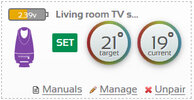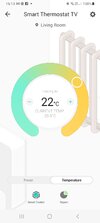Hi All.
Decided to attempt to balance my system, (as it's never been done) following the nice guide on here posted a while ago by D Hailsham. However I've got stuck at the first hurdle (check boiler temp differential according to the guide) as even with my boiler (Worcester Greenstar 9i) on the lowest pump speed and all the LS open, the temp. differential is only just over 2.5°C !
I guess once I start to close the LS, eventually once all done, the TD might be OK but to stop me ending-up chasing my arse around I thought it better to ask on here if there's summat else I should be doing first.
TIA
Decided to attempt to balance my system, (as it's never been done) following the nice guide on here posted a while ago by D Hailsham. However I've got stuck at the first hurdle (check boiler temp differential according to the guide) as even with my boiler (Worcester Greenstar 9i) on the lowest pump speed and all the LS open, the temp. differential is only just over 2.5°C !
I guess once I start to close the LS, eventually once all done, the TD might be OK but to stop me ending-up chasing my arse around I thought it better to ask on here if there's summat else I should be doing first.
TIA



